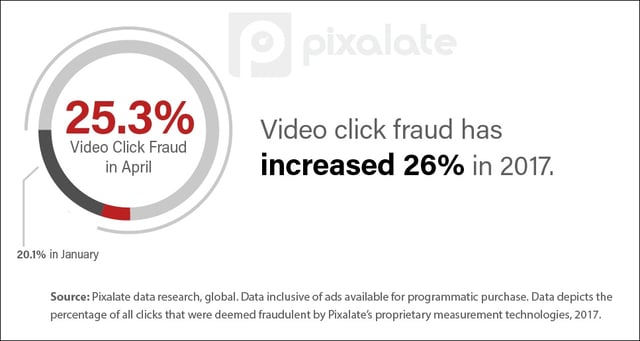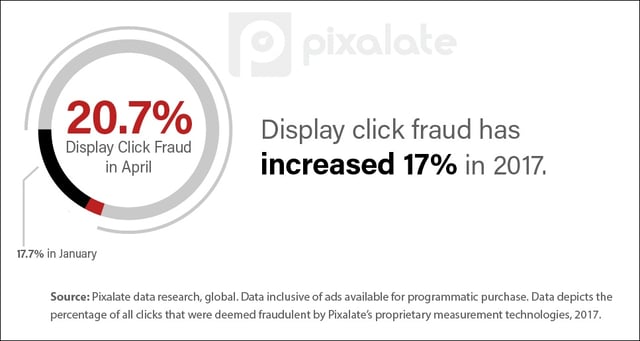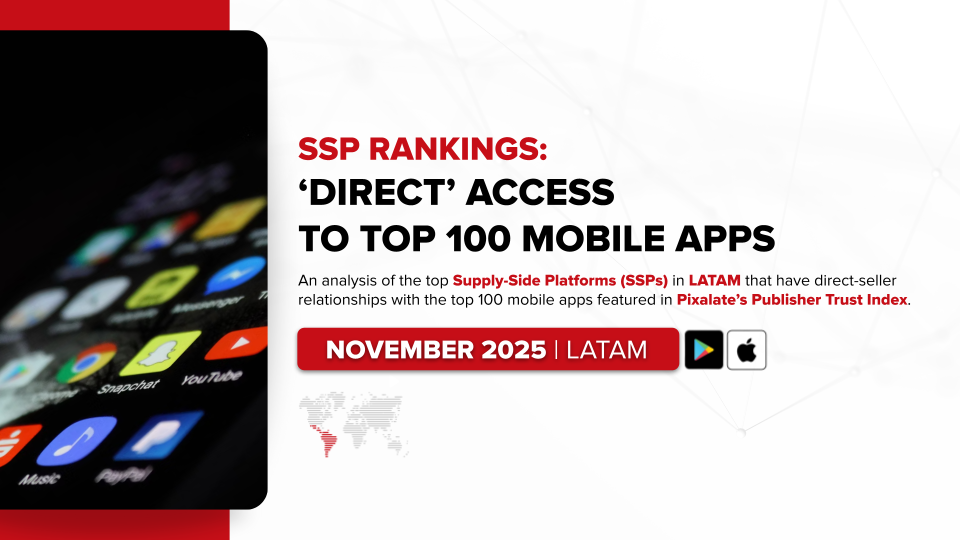Programmatic click fraud stretches across devices. Desktop, smartphone, and tablet devices are subject to click fraud — and all have seen their click fraud rates rise over the first half of 2017. Even Connected TV and OTT devices are not immune from programmatic click fraud.
But when breaking it down by two channels — display and video — what trends do we find?
Video click fraud: Programmatic video click fraud rises 26% to begin 2017
Pixalate studied video ads sold via programmatic across devices and screens to begin 2017 and uncovered that click fraud is a growing problem.

- Video ads sold via programmatic saw click fraud at a 20.1% rate in January 2017
- Click fraud more than doubled (up to 42%) in February 2017
- Overall, video click fraud was 26% higher in April 2017 than it was in January 2017 (25.3% vs. 20.1%)
Click fraud in programmatic video grew from a one-in-five problem to a one-in-four problem over the first several months of the year. However, click fraud in video has been declining when compared to its high of 42% in February. Pixalate will continue to track this trend.
Display click fraud: Fraudulent clicks on display ads increase 17% from January through April
Programmatic display click fraud increased over the first four months of 2017 as well.

- Programmatic display click fraud began the year at 17.7%
- It remained steady at 17.6% in February
- Display click fraud increased to 20.4% in March and reached a high of 20.7% in April
- Overall, programmatic display click fraud increased 17% to begin the year (from 17.7% to 20.7%).
Our research indicates that click fraud is a growing problem across devices and channels, including display and video ads. As marketers strive to apply programmatic technologies to high-quality trades, they must not get complacent when it comes to an issue that has plagued digital marketing from the beginning: click fraud.








